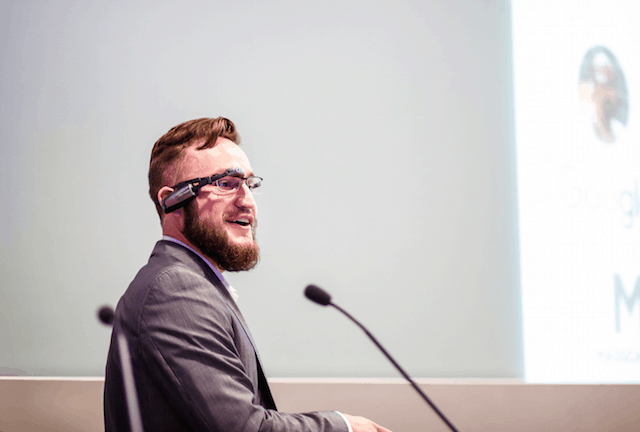First impressions count and the initial thing I noticed on our senior reporter’s first day at Centaur was the size of his mobile ‘phone.
More trestle table than electronic device, this so-called ‘phablet’ regularly emits pleasing notes that are reminiscent of birds calling from the trees but as we all know, our feathered friends don’t sing for our entertainment and neither do Andrew’s notifications.
As in the natural world, the wireless and broader digital economy must decide what strategies it will employ in order to survive, and innovation is key in an industry estimated by UKTI to employ 1.46 million people.
Take the mobile ‘phone, which gives its owner the ability to block calls. I’ve been using this function a lot lately because numerous vendors are trying to entice me into a lengthy contract - and a chunk of my salary – with their multi-facetted pocket PCs, aka smartphones and phablets.
If truth were told, I’m very happy with the one I have. It packs a modest 16GB of memory and after two years there’s still 7GB unused.
My colleagues here at Engineer Towers are similarly pleased with their devices, with Jon (Samsung Galaxy S) using his – when not actually communicating – to indulge his passion for music.
“I even use it around the home to broadcast music to a Bluetooth receiver on my stereo,” he said. “That’s probably my favourite application.”
Mr Wade’s hefty handset (a One Plus One) has the same internal specs as the Samsung S5, but for half the price.
“The best bang for your buck you can get for a smartphone,” he said glowingly, adding that one of the best things about it is the stock Android it uses, coupled with CyanogenMod, which allows him to customise virtually everything.
“The exact opposite of Apple basically,” he said.
Stuart (iPhone 6) would have more memory if that were possible and cites mapping as the function he uses most.
As for me (HTC One Mini), it’s a world of radio stations, apps, games, MCFC-related gubbins and other trifles that help pass the time and there’s only one major criticism, namely that it doesn’t seem to interface well with a PC running Windows - but that’s probably my fault.
Back in the business world, Statista estimate that 1.2 billion smartphones were sold globally in 2014, and that of July 2015, Android users were able to choose between 1.6 million apps. Apple’s App Store remained the second-largest app store with 1.5 million available apps.
Unquote recently reported that VC Highland Capital Partners Europe has made a $17m investment in Adjust, a German mobile app data specialist and this Wednesday saw the sixth edition of Discovering Start-Ups take place in London, an event that had 16 early stage tech start-ups pitch their commercial propositions to judges drawn from the world of business and investment.
One pitch came from ZapToBuy Ltd, a company whose software and app has been designed to allow consumers to call up product information and purchase items they see on screen. All you need to do is take a picture of something that takes your fancy and the app lets you know who stocks it, letting you make an instant purchase.
They say: “this technology will revolutionise the product placement market delivering a range of benefits for consumers, advertisers and visual media producers. We will facilitate a dramatic reduction in irritating and often ineffective direct advertising, as products will be integrated into programmes and films.”
Is this utterly fatuous or a stroke of genius? I think the latter, although the potential prospect of being in the cinema with lots of smartphones pointed at the screen is not one I relish right now. Either way, I hope they take things forward and make a lot of money in the process.
ZapToBuy weren’t among the five winning finalists, who were made up of companies that have developed a gene-testing platform, wireless sensor networks, a real-time cyber risk assessment tool, and a new approach to software debugging.
A notable winner was found in GiveVision, a company that is developing smart glasses for the blind. Their software powers smart glasses to be used as eyes for the visually impaired by converting visual information into audio cues. The video below shows you how it works.
The technology has the potential to be hugely assistive, but the commercial proposition makes compelling reading too.
Andrew’s apps whistle and chirp, as well they might do given that they’ve come from companies that have done the hard work and have got people to sign up to them, moving those companies from start-up to revenue generators.
Given that there are an estimated 285 million visually impaired people in the world, with 30 million living in Europe and 2 million residing in the UK the frankly excellent GiveVision concept deserves to make millionaires of all that have developed it.






Red Bull makes hydrogen fuel cell play with AVL
Formula 1 is an anachronistic anomaly where its only cutting edge is in engine development. The rules prohibit any real innovation and there would be...